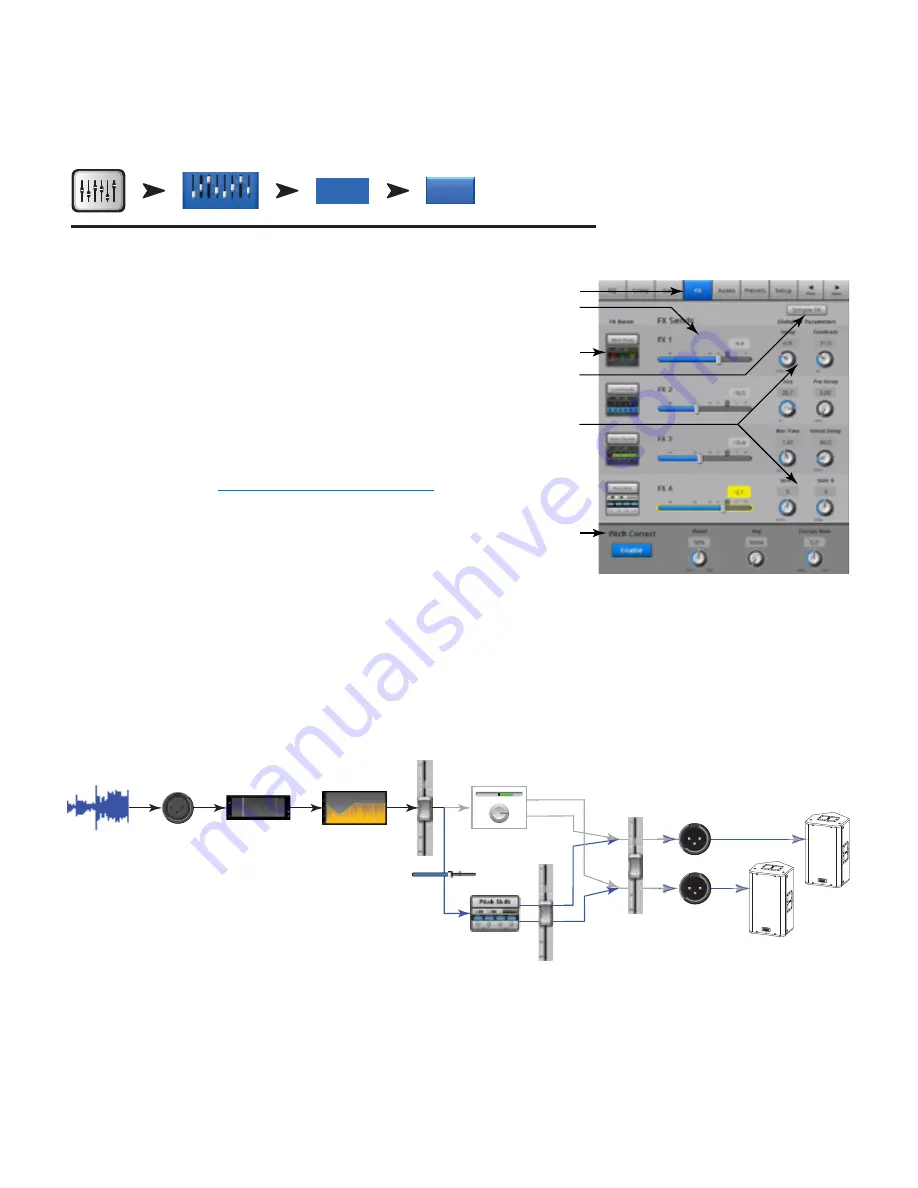
34
TD-000472-00-B
Input Channel – FX Sends
Controls how much of the Input channel’s audio is sent to the FX devices. In addition, you can adjust the FX Sends at
Menu
>
FX Overview
.
Refer to
— Figure 23
–
1.
FX Tab
– Selects the FX Sends screen.
2.
FX Send Sliders
– Sets the level of audio “sent” from the channel to the FX mix; -40 dB
is off.
3.
FX Processor
– The thumbnail representation of the FX processor takes you to a screen
where you can select the processor for that FX mix.
4.
Simple FX
– Hides the Global FX Parameters for a simpler setup.
5.
Nlobal FX Parameters
– Provides control over the two most important parameters of
the selected FX device. The controls are different depending on the selected processor.
For detail on these and other FX controls, refer to the FX device topic.
6.
Pitch Correct
– Refer to
Input Channel – Pitch Correct on page 35
.
FX Signal Flow
Audio input passes through the EQ, Dynamics (compressor and gate) and the Channel
Fader. At this point the audio signal is split and goes in two directions:
1. Through the Pan control to the Main L/R Fader and Main outputs.
2. To the 4 Channel FX sends (Figure 6 shows just one of the four FX Sends)
The FX Send control determines how much of the channel audio is sent (or routed) to the assigned FX processor.
The FX processor works its magic on the audio and transforms the mono input into a stereo signal. The FX Master fader controls how much or how
little of the processed (“wet”) signal is combined with the unprocessed (“dry”) before going to the FX Master fader and on to the Main L/R outputs.
— Figure 24 —
Input
Channels
-40
-20
-10
-5
5
10
U
EQ
Dynamics
Channel
Fader
Channel
Pan
FX
Sends
Audio
Input
L
C
R
FX
Master
Main
L/R
FX
Main
Left
Main
Right
Home
Select an
Input Bank
Touch Select
Button
Select
FX Tab
FX
In 2
Inputs 1-8
— Figure 23 —
2
1
3
4
5
6
















































